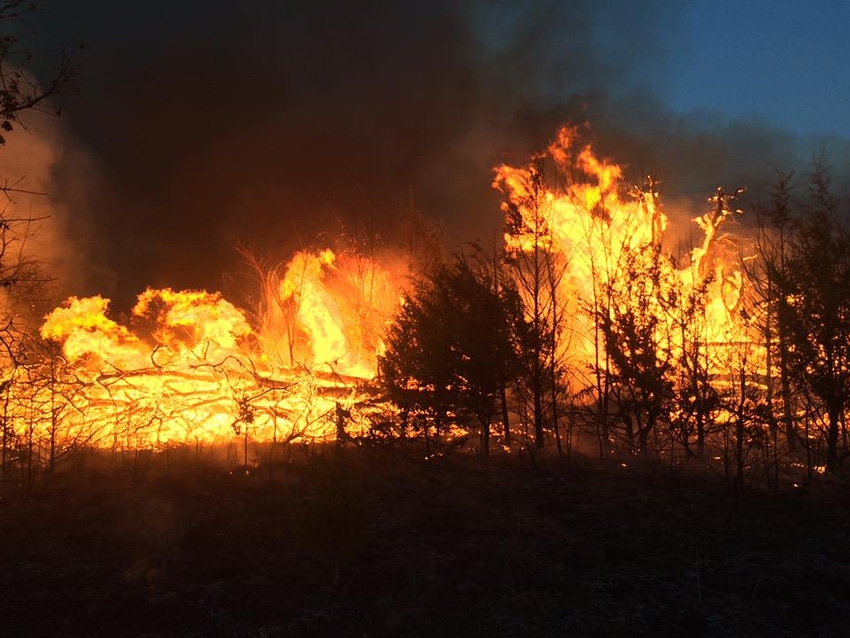Oklahoma cattle producers face $26.4m in wildfire losses
Expanding drought leaves producers near tipping point.

Wildfire loss estimates based on the preliminary information currently available sum to a total of $26.4 million for cattle operations, according to Derrell Peel, Oklahoma State University Extension livestock marketing specialist.
“Estimated cattle industry losses in Oklahoma include $16.4 million for fence replacement and repair; $1.4 million for livestock killed or destroyed as a result of the fire, plus veterinary costs and reduced value of the surviving injured animals; $6.3 million for burned facilities and corrals; $1.6 million for emergency feed, and ($660,000) for burned pasture and hay,” Peel noted.
However, these totals do not include any estimates for losses of vehicles, equipment or homes or other personal property destroyed in the fires, he said, noting that “these estimates may increase as a more comprehensive assessment of the losses is completed.”
The fires burned more than 348,000 acres and destroyed numerous houses and ranch facilities, Peel reported.
“Current estimates suggest that some 1,600 cattle died in the fire, with numerous others burned and hurt. At least 2,100 miles of fence were damaged or destroyed,” he said.
Additionally, the burned pastures and hay left many thousands of animals displaced and in need of emergency feed. Demand for hay and pasture from the fire is adding to pressure on diminished hay supplies in the broader drought area.
“The drought can pass with little significant additional impact if rains arrive very soon. Failing that, the drought will become a major issue in the next few weeks,” Peel warned.
Drought expanding
According to Peel, drought conditions continued to expand last week after rains two weeks ago resulted in a brief halt to the worsening drought in Oklahoma. The most recent U.S. Drought Monitor indicated that 34.8% of Oklahoma is in D3 (extreme) and D4 (exceptional) drought, including 10.7 million acres of D4 conditions in western Oklahoma and the panhandle.
“The last 180 days in the Oklahoma panhandle have been the third driest ever, while western Oklahoma is the fifth driest on record for this period,” he said. “April was colder than usual, but with warmer May temperatures, drought conditions will expand rapidly unless rains come soon.”
Above-average temperatures in the southern Plains are forecasted for the next two weeks, with a below-average probability of precipitation, Peel added.
While he is not aware of any cattle liquidation in the worst drought areas yet, he explained that hay supplies are tight, so if summer pastures do not develop in the next month, the situation will become much more critical.
“Significant removal of cattle could begin by June. The total D3 and D4 drought area in Kansas, Oklahoma and Texas is currently 53.5 million acres. This area has a carrying capacity between 2.0-2.5 million animal units," Peel said. "The drought area and the number of cattle impacted could expand rapidly in the coming weeks.”
About the Author(s)
You May Also Like



